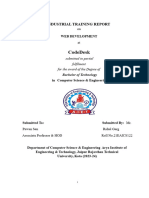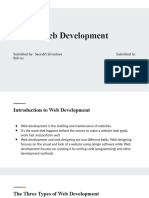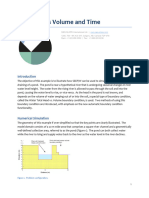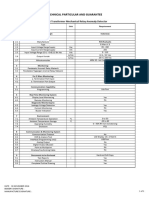0% found this document useful (0 votes)
12 views25 pagesProject
The document provides an overview of web development, covering its history, key technologies, and the distinction between front-end and back-end development. It introduces CodeBind Technologies, detailing its mission, vision, and services offered in web and mobile application development, as well as digital marketing. Additionally, it explains database types, including SQL and NoSQL, and their respective commands and features.
Uploaded by
BashaCopyright
© © All Rights Reserved
We take content rights seriously. If you suspect this is your content, claim it here.
Available Formats
Download as PDF, TXT or read online on Scribd
0% found this document useful (0 votes)
12 views25 pagesProject
The document provides an overview of web development, covering its history, key technologies, and the distinction between front-end and back-end development. It introduces CodeBind Technologies, detailing its mission, vision, and services offered in web and mobile application development, as well as digital marketing. Additionally, it explains database types, including SQL and NoSQL, and their respective commands and features.
Uploaded by
BashaCopyright
© © All Rights Reserved
We take content rights seriously. If you suspect this is your content, claim it here.
Available Formats
Download as PDF, TXT or read online on Scribd
/ 25
























































































